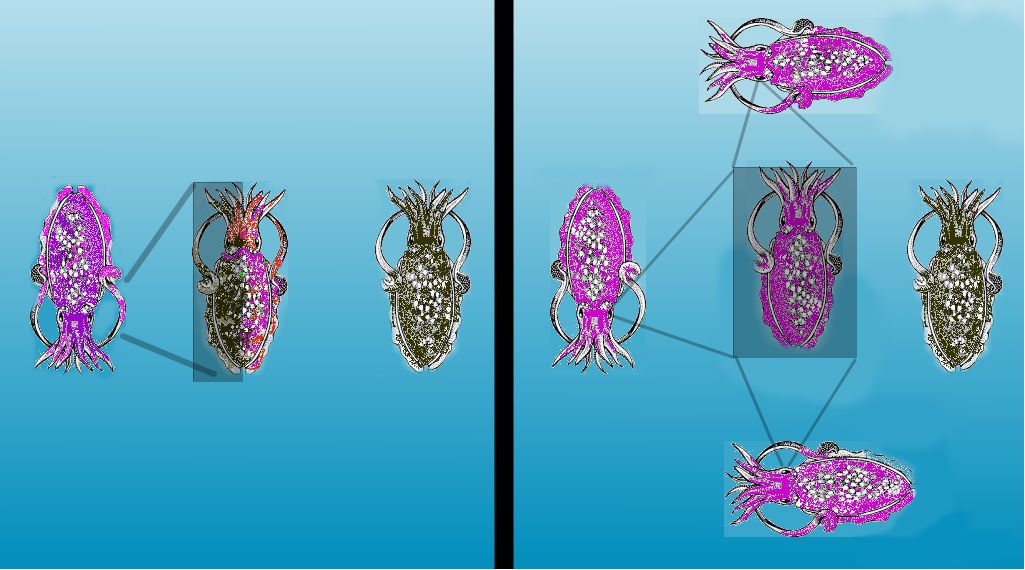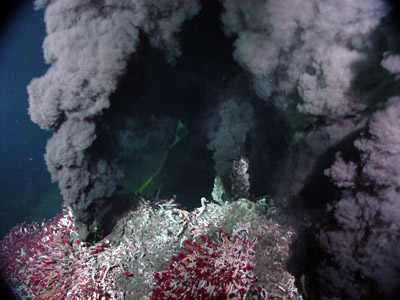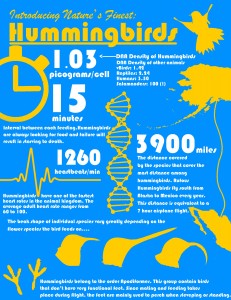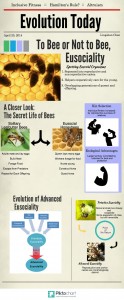Contributed by Annelise Bonvillian, Cherisma Patel and Liz Pinkerton
I introduce to you two rattlesnakes. I think they’re generally friendly but they could also be planning to maim me. You just never know with venomous snakes. 

Judging by their appearance, you’d think both rattlesnakes were of the same species. You’d be right, being the clever person you are. They are in fact part of the same subspecies of Southern Pacific Rattlesnake (Crotalus oreganus helleri).
These C. o. helleri rattlesnakes are venomous. Before we dive into their story, let’s explain venom.
Venom Across The Tree of Life
Many animals have evolved venom for protection or to help them capture prey. We, unfortunately have not.

There are also a wide range of structures for delivering venom, such as the cute little fangs in these rattlesnakes.

The interesting thing is, similar types of venom have evolved in completely unrelated species. This is not because all venomous species evolved from one super venomous ancestor or because the venomous critters of the world get together to talk strategy.

Evolution of venom is a solid example of convergent evolution in which organisms that are not very closely related independently evolve similar traits due to similar environmental pressures. The proteins in the toxin end up acting on the same physiological molecule by chance. Most venoms involve disrupting major physiological pathways that are accessible by the bloodstream, especially the hemostatic and neurological systems. Damaging these systems would efficiently cripple any prey or potential predator.
Back to the Rattlesnakes
Getting back to our original C. o. helleri rattlesnakes, you’d think it might be true that they’d have the same type of venom because they’re of the same subspecies, right?
 In fact, these two rattlesnakes are very closely related, but the populations that live in the mountains have a distinctly different venom than those that live in the desert.
In fact, these two rattlesnakes are very closely related, but the populations that live in the mountains have a distinctly different venom than those that live in the desert.

Distribution of Crotalus oreganus
A research team from the University of Queensland studied the variation between rattlesnakes in the mountainous area of Idyllwild, California and those in the desert of Phelan, California. The extent of venom variation is surprising for two populations because the two areas are relatively close together geographically.
The venom of the desert-dwelling rattlesnake contains proteins that break down blood vessels and prevent clotting.

This venom is slow acting. It is described as haemotoxic and would lead to uncontrollable bleeding. Neat!

Its close relative in the mountains is equally as morbid. The mountain populations have proteins in their venom that stop nerves from sending signals to the muscles.
This venom is fast acting. It is described as neurotoxic and results in paralysis. Sweet!

The venoms are completely different even though these two populations are from the same subspecies.
In fact, venom can vary between species, subspecies, individuals, sexes, and ages. Another research team from the Biomedical Institute of Valencia that loves poisonous reptiles just as much as the the previous one studied venom variability in Mojave rattlesnakes in Arizona. They found that you were 10 times more likely to die from a bite in one county than another. Here, the severity, not the type, of venom was what varied.
So, getting back to our C. o. helleri rattlesnakes (don’t worry, we love you best), here’s another question: which would be better to have in the snake’s arsenal? The fast acting neurotoxin venom or the slow acting haemotoxin?

Evolution, the lovely process that developed these fine creatures is NOT about having the best of a trait. The fitness of a certain trait is relative. What is good for one population might not necessarily be the best for another. Based on where they live, different venom types might be more beneficial in capturing prey or warding off predators.
So why would it be more beneficial for the mountain rattlesnake to have a faster acting venom?
Researchers suspect that environmental differences between these two populations of rattlesnake are likely to have promoted the huge variation in venom between the two.
If the mountain rattlesnake’s venom was slow acting the, prey could hide before the venom had properly incapacitated it.

And venom isn’t cheap. Creating venom costs a lot of energy and wasting it time and time again would be a shame. Natural selection would thus lead to a venom composition that would reduce metabolic cost. Natural selection is the process by which organisms that have higher fitness and are more adapted to their environment tend to produce more offspring and survive.
Now, in the desert, rattlesnakes don’t have to worry as much about their prey hiding before they can get to them. They might not have evolved the quicker neurotoxic venom because there was no selective pressure to have their venom be fast acting.

As with most things in this incomprehensible universe, we are not sure if the desert dwelling Southern Pacific rattlesnake maintains its haemotoxic venom due to lack of selection pressure. Or perhaps somehow the snakes have co-evolved with their prey and the haemotoxic venom is just the most efficient one for the prey type.
All in all, it’s important to realize that evolution isn’t a race where the end goal is to have the best of something. Traits change randomly due to mutations, and factors such as the environment or prey type select for variations that are most beneficial for survival.
In related news, using the vast powers of human intelligence to learn from the natural world, snake venom is being adapted to heal instead of hurt. Venom works in the same way as many medicines, and the enzymes in venom are being modified to affect disease processes.

One specific example includes the using ACE inhibitors in Brazilian pit viper venom to prevent hypertension.
However, with the decline of snake diversity due to environmental degradation, the diversity of venom and its medical potential is decreasing.The fact that venom from various snakes can be used to target certain diseases is a very important implication for evolutionary medicine. Population divergence in snakes increases the potential for variation in venom type, which can ultimately increase the antidotes possible for fighting certain diseases.
So why research things like rattlesnake venom? Not only is the subject wildly fascinating, but unraveling the complexities of snake venom can help humans better counter its life-threatening effects and can also promote the development of new medicines. In conclusion, though we may be terrified of you, dear rattlesnakes and other venomous denizens of this world, we’d also like to say thanks. May you continue to amaze us.
Check out these sites for more information:
Caswell, Nocholas R., Wolfgang Wuster, Freek J. Vink, Robert A. Harrison, and Bryan G. Fry. 2012. Complex cocktails: the evolutionary novelty of venoms Trends in Ecology and Evolution.
Holland, Jennifer S. 2013. Venom: The Bite That Heals. National Geographic: The New Age of Exploration. http://ngm.nationalgeographic.com/2013/02/125-venom/holland-text
Kartik Sunagara, Eivind A.B. Undheimc, Holger Scheibd, Eric C.K. Grene, Chip Cochrane, Carl E. Persone, Ivan Koludarovc, Wayne Kellne, William K. Hayese, Glenn F. Kingd, Agosthino Antunesa, Bryan Grieg Fry. Intraspecific venom variation in the medically significant Southern Pacific Rattlesnake (Crotalus oreganus helleri): Biodiscovery, clinical and evolutionary implications. 2014. Journal of Proteomics. http://www.sciencedirect.com/science/article/pii/S1874391914000256
Massey DJ, Calvete JJ, Sánchez EE, Sanz L, Richards K, Curtis R, Boesen K. 2012. Venom variability and envenoming severity outcomes of the Crotalus scutulatus scutulatus (Mojave rattlesnake) from Southern Arizona. Journal of Proteomics. http://www.ncbi.nlm.nih.gov/pubmed/22446891
Yong, Ed. 2014. Rattlesnakes Two Hours Apart Pack Totally Different Venoms. National Geographic: Phenomena. Online. http://phenomena.nationalgeographic.com/2014/01/27/rattlesnakes-two-hours-apart-pack-totally-different-venoms/
Zimmer, Carl. 2013. On the Origin of Venom. National Geographic: Phenomena. Online. http://phenomena.nationalgeographic.com/2013/01/09/on-the-origin-of-venom/










